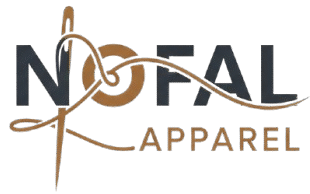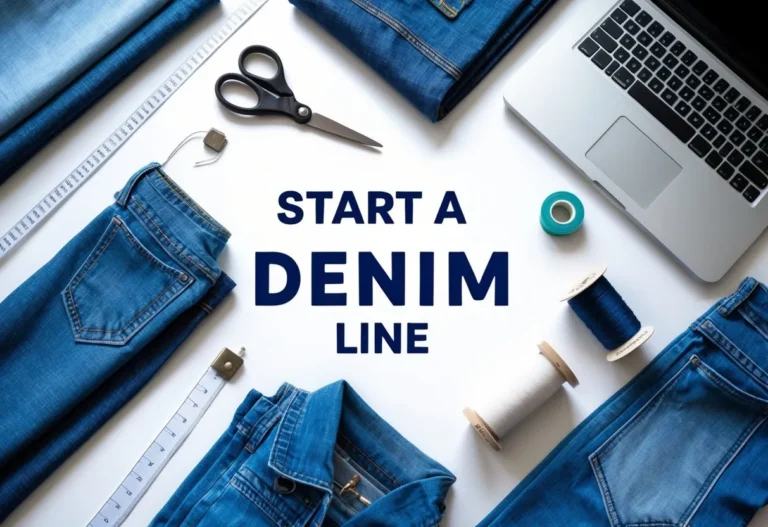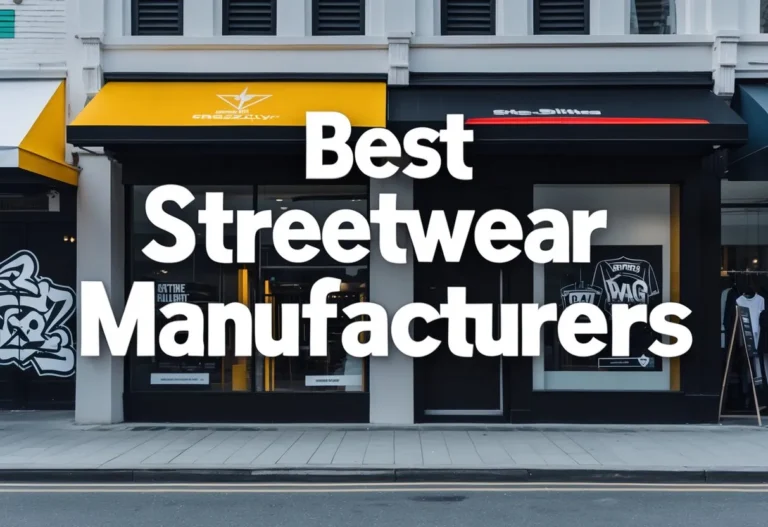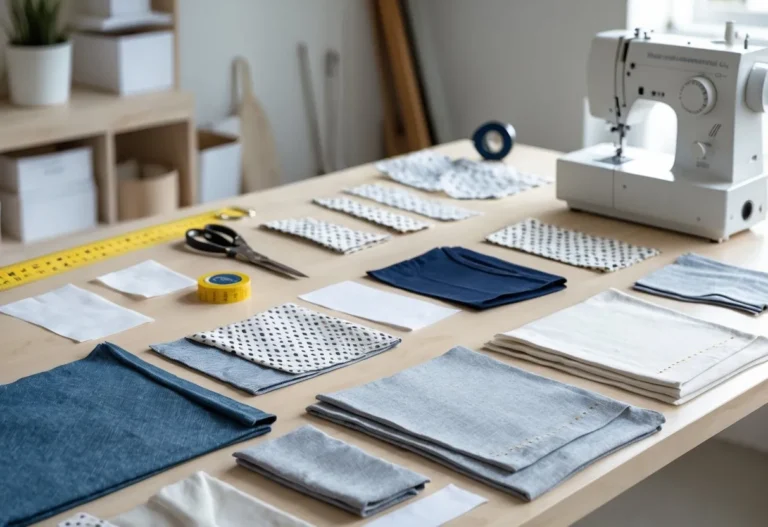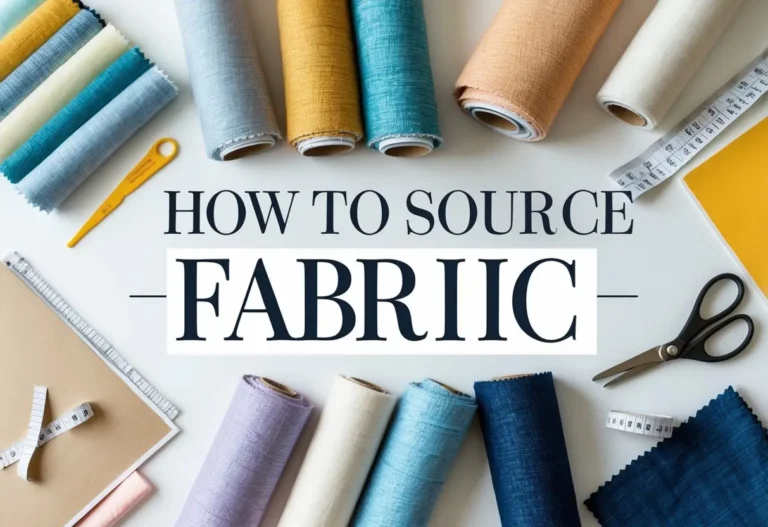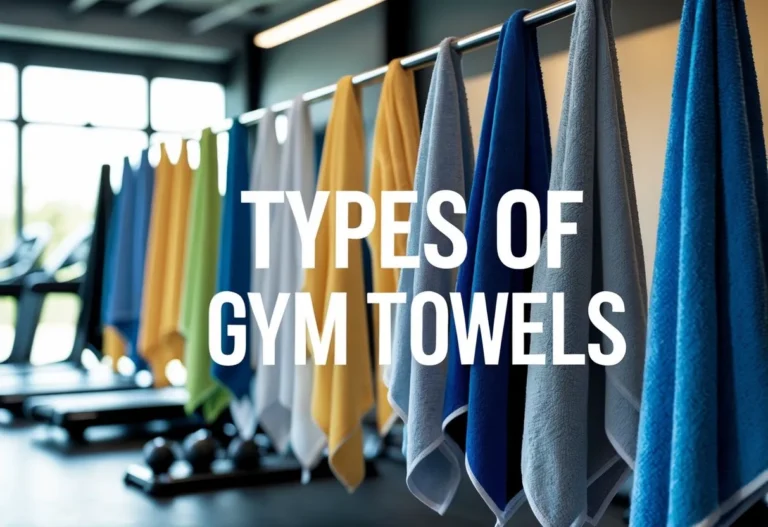Starting a private label clothing brand lets someone create their own fashion line without making the products from scratch. Instead, they partner with manufacturers who produce clothing that can be branded with their own name and style. The key to success is understanding the market, choosing a clear niche, and working closely with reliable manufacturers to bring designs to life.

Building a strong brand means knowing who the clothes will serve and what makes them unique. Effective branding and smart marketing help draw customers and make the brand stand out from the competition. Managing production, legal paperwork, and sales channels is also essential for creating a sustainable business.
By following clear steps focused on planning, designing, manufacturing, and promoting, anyone can launch a private label clothing brand. This process provides a cost-effective way to enter the fashion industry while keeping control over style and brand identity.
Key Takeways
- Success depends on choosing a clear target audience and niche.
- Building a strong brand identity helps attract loyal customers.
- Working with trustworthy manufacturers ensures quality products.
Understanding Private Label Clothing

Private label clothing is a way for entrepreneurs to enter the fashion industry by selling products made by others under their own brand. This approach allows control over design, branding, and pricing while avoiding the complexities of manufacturing. It differs from other business models in key ways and comes with specific advantages and challenges.
What Is Private Label Clothing?
Private label clothing refers to apparel produced by a manufacturer but sold under a retailer’s own brand name. The clothing is not designed or made by the brand owner but customized enough to carry their logo and style identity.
This model lets entrepreneurs create a unique clothing line without handling the entire production process. They typically choose styles, fabrics, and features, then provide these details to manufacturers. The result is a branded clothing line that reflects their vision but relies on external production expertise.
Private Label vs Other Business Models
Unlike traditional clothing lines, where the entrepreneur oversees design and manufacturing, private label focuses more on brand building and marketing. Entrepreneurs do not need to own factories or manage material sourcing directly.
Compared to wholesale, private label offers more control over product design and branding but with lower responsibility for production logistics. In contrast, custom clothing manufacturing builds entirely new designs for a brand, usually requiring more investment and design input.
| Business Model | Design Control | Manufacturing Involvement | Branding Control | Initial Cost |
|---|---|---|---|---|
| Private Label | Medium | Low | High | Moderate |
| Traditional Clothing | High | High | High | High |
| Wholesale | Low | Low | Low | Low |
| Custom Manufacturing | Very High | Very High | Very High | Very High |
Benefits and Challenges
Private label clothing brands allow quick market entry without in-house production. Entrepreneurs gain control over branding, pricing, and product direction while leveraging a manufacturer’s expertise. This reduces upfront risks and the need for large investments in factories or materials.
However, challenges include finding reliable manufacturers open to small orders and ensuring product quality. Minimum order quantities can be high, making testing the market difficult. Communication must be clear to align manufacturer output with brand vision. Also, legal aspects like trademarking and label compliance require attention to protect the brand and meet regulations.
Identifying Your Niche and Target Audience

A clear understanding of the product focus and the people who will buy the clothing lines is essential. Defining these elements ensures the brand meets real customer needs and stands out in a crowded market. This involves selecting a niche with demand and outlining who the target audience is, along with positioning the brand effectively against competitors.
Choosing a Profitable Niche
Choosing the right niche means finding a market segment with steady or growing demand. For private label clothing brands, options include underwear, sweatshirts, shirts, or t-shirts. Each niche has unique customer preferences and seasonal trends that influence sales.
Research competitors to identify gaps in the market. For example, if casual streetwear is saturated, focusing on sustainable workout wear might capture an underserved group. Consider production costs and potential margins. A profitable niche balances demand, product differentiation, and reasonable manufacturing minimums.
Defining Your Target Audience
Defining the target audience means identifying demographics like age, gender, lifestyle, and buying habits. For a t-shirt brand, the audience might be young adults who prefer casual, graphic tees with bold designs. For underwear, comfort and material quality might be top priorities for middle-aged customers.
Use surveys, social media insights, and purchasing behavior data to understand what customers value. This clarity helps tailor product features like fabric type, fit, and style. The better the fit between product and audience, the higher customer satisfaction and repeat business.
Positioning Your Brand in the Market
Positioning defines how the brand is viewed against competitors and what makes it special. A fashion brand specializing in sweatshirts might focus on comfort, eco-friendly materials, or urban style. Highlighting such features in marketing builds a clear brand identity.
Develop unique branding elements like logos, colors, and packaging that resonate with the target market. Positioning should directly address customer needs and preferences. Strong positioning helps the private label brand communicate value and encourages customer loyalty in a competitive market.
Building Your Brand Identity

Creating a strong brand identity means choosing a name, designing visuals, and defining values that connect with the target audience. It involves building elements that make the clothing brand recognizable and meaningful. Clear decisions here help set the tone for all marketing and design efforts.
Selecting a Brand Name
The brand name should be simple, memorable, and aligned with the niche. It needs to be easy to pronounce and spell to make it easier for customers to find and talk about the brand.
Checking domain name availability and social media handles is crucial to ensure consistency online. The name should reflect the style or mission of the clothing brand without limiting future growth.
Avoid names that are too generic or complex. Choosing a name that hints at the brand’s personality, such as sporty, eco-friendly, or luxury, helps attract the right audience and set expectations.
Logo and Visual Style
The logo serves as the primary symbol of the brand and must be clear at all sizes. It should look good in color and black-and-white to maintain versatility across different media.
A cohesive visual style includes a color palette, typography, and design elements that work together. Colors represent emotions; choosing them carefully reinforces the brand’s message (e.g., green for sustainability, black for elegance).
Consistency in visual style across the website, tags, and packaging builds brand recognition. The visual style must appeal to the target audience and fit the niche, creating a professional and trustworthy image.
Core Brand Elements and Story
Brand elements include the logo, tagline, packaging, and messaging style. These are tools to communicate what the brand stands for and why customers should choose it.
The brand story adds depth, explaining the origin, mission, or values behind the clothing line. A compelling story connects with customers emotionally and creates loyalty.
This story should be authentic and clearly stated on the website and marketing materials. It can highlight unique aspects, such as ethical production or a focus on comfort, making customers feel part of the brand’s journey.
Establishing Brand Values
Defining clear brand values guides decisions on product design, marketing, and partnerships. These values should align with customer expectations and market demands.
For example, a sustainable clothing brand values eco-friendly materials and ethical practices. Values like quality, inclusivity, or innovation also shape how the brand presents itself.
Communicating brand values consistently helps build trust and attracts customers who share those principles. These values become part of the brand identity and influence everything from messaging to product development.
Designing Your Private Label Clothing Line

Designing a private label clothing line involves clear decisions about style, materials, and technical details. Careful planning here ensures the products meet quality standards and appeal to the target customers.
Concept Development and Product Range
The first step is defining the overall style and the types of garments to offer. The designer should decide on the range—such as t-shirts, hoodies, or jackets—based on market research and customer needs. It’s important to focus on a niche that fits the brand’s identity and fills a gap in the market.
Creating a focused product range helps maintain quality and manage production costs. Each piece should have a clear purpose and look consistent with the brand’s core values and aesthetics. Developing a cohesive collection increases chances of customer recognition and loyalty.
Fabric and Material Selection
Choosing the right fabric is crucial for garment quality and customer satisfaction. Fabrics vary in fiber content, weight, texture, and durability, affecting the comfort and appearance of the clothing.
Common choices include cotton, poly-cotton blends, fleece, and spandex-infused fabrics. For example, lightweight cotton offers breathability, while poly-cotton blends balance durability with comfort. Understanding fabric GSM (grams per square meter) helps assess thickness—lower GSM means lighter fabric, higher means heavier and warmer material.
Selecting sustainable or specialty fabrics can add value and align with consumer trends, but must also fit budget and production capabilities.
Creating Tech Packs
Tech packs are detailed documents that communicate design specifications to manufacturers. They include measurements, fabric types, stitching details, colors, labels, and any special requirements.
A precise tech pack reduces misunderstandings and production errors. It should show sketches or flat drawings with all technical notes clearly listed. Tech packs act as a blueprint, ensuring the finished product matches the designer’s vision.
This document is essential for sampling and mass production, making it easier to track changes, costs, and timelines throughout the manufacturing process.
Customization Options
Customization allows brands to stand out through personalized features like custom prints, embroidery, or unique trims. These details should enhance the product without compromising quality or increasing costs excessively.
Options may include eco-friendly inks, limited edition designs, or adjustable fits. Brands should assess manufacturer capabilities, as not all offer extensive customization.
Adding value through customization can attract a wider audience but requires clear communication with the manufacturing partner to manage expectations and maintain consistency across production batches.
Finding and Working With Manufacturers

Finding the right manufacturer is key to launching a private label clothing brand. This process involves choosing a manufacturer that fits the brand’s needs, understanding their production limits, checking product quality early, and building a reliable relationship. Attention to these details helps avoid costly mistakes and supports steady business growth.
Selecting a Private Label Clothing Manufacturer
When selecting a private label clothing manufacturer, the most important factors are experience with private labeling, willingness to work with startups, and ability to customize products. A good manufacturer should offer flexibility in design and material choices while respecting your brand’s vision.
It’s essential to confirm that the manufacturer can produce the styles and fabrics needed. Checking reviews and requesting references can reveal their reliability. Also, the manufacturer should provide clear communication about pricing, timelines, and any extra fees like setup or design charges.
Evaluating Production Capacity and MOQs
Production capacity determines how many units a manufacturer can make within a set time. This affects how quickly a brand can scale and meet customer demand. The manufacturer must be able to handle your orders on time without compromising quality.
Minimum order quantities (MOQs) are crucial in this stage. Many manufacturers require a minimum number of items per order, often in the hundreds or thousands. Brands with limited budgets should seek manufacturers with low MOQs to test designs without large investments.
| Factor | Importance |
|---|---|
| Production Capacity | Ensures timely fulfillment and scaling |
| MOQ | Balances inventory risk with startup budget |
Ordering Samples and Quality Checks
Ordering samples is necessary to verify the manufacturer can meet the design and quality standards. Samples show how the final product will look and feel and can highlight issues with sewing, fit, or materials.
After receiving samples, conduct thorough quality checks on stitching, fabric strength, colorfastness, and packaging. This step helps avoid bulk orders of defective products. If samples don’t meet expectations, feedback should be given to the manufacturer, and revisions may be necessary before full production.
Building a Strong Partnership
A successful private label clothing brand needs a strong, ongoing partnership with the manufacturer. Trust and clear communication are essential. The brand owner should stay involved through production phases to quickly resolve problems.
Manufacturers who offer trade insurance or guarantees can provide added security. Regular check-ins and updates help maintain quality and meet deadlines. Building this relationship supports smoother scaling and the ability to adapt designs or orders based on customer feedback.
Production, Packaging, and Inventory Management

Effective production, packaging, and inventory management are essential for running a private label clothing brand smoothly. They ensure quality garments reach customers on time and that the brand’s image remains consistent. Careful planning helps avoid delays, controls costs, and supports growth.
Managing Production and Lead Times
Choosing the right manufacturer is crucial. They should provide clear timelines for sampling, production runs, and delivery. Lead times vary but usually range from a few weeks to several months depending on the order size and complexity.
Request samples before full production to check garment quality and fit. This step reduces risks and avoids costly mistakes.
Communication matters. Regular updates on production status help avoid surprises and allow adjustments if needed. Also, understand minimum order quantities (MOQs) to manage initial inventory investment wisely.
Packaging and Branding Elements
Packaging acts as the first physical connection between the brand and customer. It must protect garments during shipping and showcase the brand’s personality.
Key elements include:
- Labels and tags with brand logos and care instructions
- Protective wrapping that fits e-commerce or retail needs
- Boxes or bags designed for safe delivery and a positive unboxing experience
Packaging should meet legal requirements, such as fabric content and country of origin labels. Consistent branding across packaging helps build recognition and trust.
Inventory Management Strategies
Good inventory management balances stock availability with minimizing extra costs. Tracking inventory through software or spreadsheets prevents overstocking or running out of products.
They should plan for seasonal demand changes and avoid ordering too much stock early. Partnering with third-party logistics (3PL) providers can help manage storage and shipping efficiently.
Clear records aid in forecasting future orders and identifying slow-moving items. This approach saves money and keeps the business agile.
Sales Channels, Marketing, and Growth

Choosing the right sales channels and marketing methods is essential for building a private label clothing brand. Careful setup of online and wholesale platforms combined with focused advertising will improve reach and sales. A great customer experience also supports long-term growth.
Setting Up Your Online Store
Having an online store is crucial for a private label clothing brand. Platforms like Shopify make it easy to build and manage an e-commerce site without deep technical skills. The store should showcase products clearly with quality photos, accurate descriptions, and easy navigation.
Integrate secure payment options and set up real-time inventory updates. Fast loading times and mobile-friendly design help keep visitors engaged. Also, consider using tools for SEO and analytics to track customer behavior and improve sales.
A well-organized online store gives complete control over branding and pricing, allowing better profit margins than other channels.
Exploring Wholesale and Other Sales Channels
Wholesale offers a way to increase volume and reach larger markets quickly. Selling to boutiques or larger retailers helps distribute the product widely but often means lower profit margins compared to direct sales.
Brands should negotiate clear terms, including minimum order quantities (MOQs), pricing, and delivery schedules.
Other channels like pop-up shops, markets, or third-party e-commerce platforms can also expand reach. Each channel should match the brand’s style and target customers to avoid brand dilution.
A balanced mix of online direct sales and wholesale partnerships strengthens revenue and brand presence.
Marketing and Advertising Strategies
Marketing must focus on building brand identity and reaching potential customers effectively. Social media platforms like Instagram and TikTok are ideal for visual content and influencer partnerships, which suit clothing brands well.
Paid advertising through Facebook Ads or Google Ads can target specific customer groups based on age, interests, and shopping habits. Email marketing helps nurture customer relationships by sharing updates and exclusive offers.
Content marketing, such as blogs or style guides, adds value and boosts SEO. Monitoring data from campaigns ensures marketing budgets focus on the most effective strategies.
Enhancing Customer Experience
Customer experience impacts repeat sales and word-of-mouth growth. Easy navigation on the website, clear return policies, and responsive customer service build trust.
Packaging should reflect the brand’s image and create a positive unboxing experience. Offering loyalty programs and personalized emails helps keep customers engaged.
Collecting feedback and acting on it improves products and service quality. A smooth buying process and ongoing support encourage customers to recommend the brand and return for future purchases.
Business Operations and Legal Requirements

Starting a private label clothing brand requires clear planning and careful attention to the business and legal details. This includes defining goals, meeting legal rules, protecting the brand, and setting up for future growth.
Creating a Business Plan
A solid business plan outlines the brand’s mission, target market, products, and finances. It should include a clear description of the niche and customer profile. The plan must detail the types of clothing offered, price points, and sources of supply or manufacturing.
Financial projections are important. They should cover startup costs, expected sales, and operating expenses. This helps track progress and plan for cash flow. Defining marketing strategies, such as social media outreach or partnerships, also ensures there is a plan to reach potential buyers.
Legal and Regulatory Considerations
Choosing the right legal structure, such as an LLC or corporation, protects personal assets by separating them from business risks. This setup helps avoid personal liability for debts or lawsuits.
The business must comply with federal, state, and local laws. This includes registering the company, getting the necessary permits, and following tax rules. Maintaining corporate formalities like separate financial accounts and proper record-keeping is crucial to keep legal protections in place.
Working with a lawyer to draft an operating agreement or bylaws will clearly define management roles and business operations, reducing future disputes.
Trademarking and Label Compliance
Protecting the brand identity through trademark registration is essential. Trademarks safeguard logos, brand names, and slogans from unauthorized use. This legal protection ensures others cannot copy the brand’s unique design or message.
Labels must comply with fiber content laws and country of origin regulations. Accurate labeling builds trust with customers and prevents legal fines. Businesses should also ensure labels include care instructions and sizing details as required by law.
Filing trademarks and ensuring proper labels help maintain a professional reputation and avoid costly legal issues.
Planning for Long-Term Success
Long-term growth depends on building a strong legal and operational foundation. This includes setting up a capital structure that allows for investment and expansion. Offering option plans or equity to key employees can motivate the team and support business growth.
Regularly reviewing contracts with suppliers and distributors prevents misunderstandings. It is important to update legal documents as the business evolves to stay compliant with industry rules.
Tax planning should align with the brand’s financial goals, whether aiming for short-term profit or long-term gain. A professional advisor can help optimize tax strategies to maximize earnings and ensure sustainability.
Frequently Asked Questions
Starting a private label clothing brand requires careful planning and specific actions. Important topics include initial steps, budget management, platform choices, and creating business plans. Understanding legal rules and accessing useful learning resources is also important.
What are the initial steps to establishing a private label clothing business from home?
The first steps include deciding on a niche that fits the market and the entrepreneur’s vision. Next, designing products and creating a tech pack with details like measurements and materials is essential.
After this, finding a manufacturer who accepts low minimum order quantities (MOQ) and offers samples is key. Registering the business and securing necessary licenses must be done before selling.
What is the most cost-effective way to launch a clothing brand when operating on a tight budget?
Starting with a small product range reduces upfront costs. Choosing manufacturers with low MOQ helps avoid large inventory expenses.
Using digital marketing like social media and influencer partnerships is an affordable way to build brand awareness. Dropshipping or print-on-demand services can also lower the risks tied to inventory.
Which online platforms are best suited for starting a private label clothing brand?
Platforms like Shopify provide easy tools to build an online store with custom branding. Amazon and Etsy can offer quick access to customers but may limit branding control.
Social media sites like Instagram and TikTok are effective for marketing and customer engagement. Combining an e-commerce website with social channels often works best.
How can one create a business plan for a luxury private label clothing venture?
The business plan should focus on brand identity, target market, and unique selling points such as quality and exclusivity. Pricing strategy must reflect the luxury positioning.
Detail financial projections including production costs, marketing budgets, and revenue goals. Planning distribution channels like boutiques or high-end online stores is important, as is outlining marketing tactics aligned with luxury branding.
What resources or courses are recommended for someone looking to learn about starting a clothing brand?
Courses on fashion business fundamentals from platforms like Coursera and Udemy provide useful basics. Industry-specific guides and webinars from experienced brand owners also help.
Joining fashion industry groups or forums offers networking and real-world advice. Reading up-to-date blogs on manufacturing, trends, and branding can improve knowledge continuously.
What are the legal considerations to keep in mind when starting your own clothing label?
Registering the business name and choosing the proper legal structure is essential. Securing trademarks for the brand name and logo protects intellectual property.
Obtaining necessary permits and following labeling laws, such as fabric content and care instructions, is required. Understanding sales tax collection rules and contracts with manufacturers prevents legal issues.
